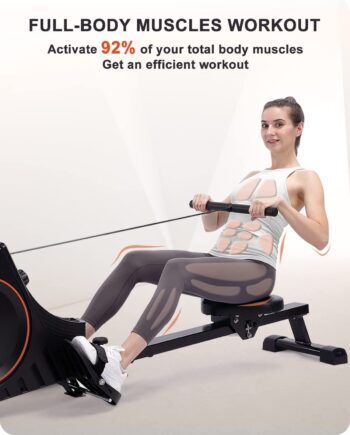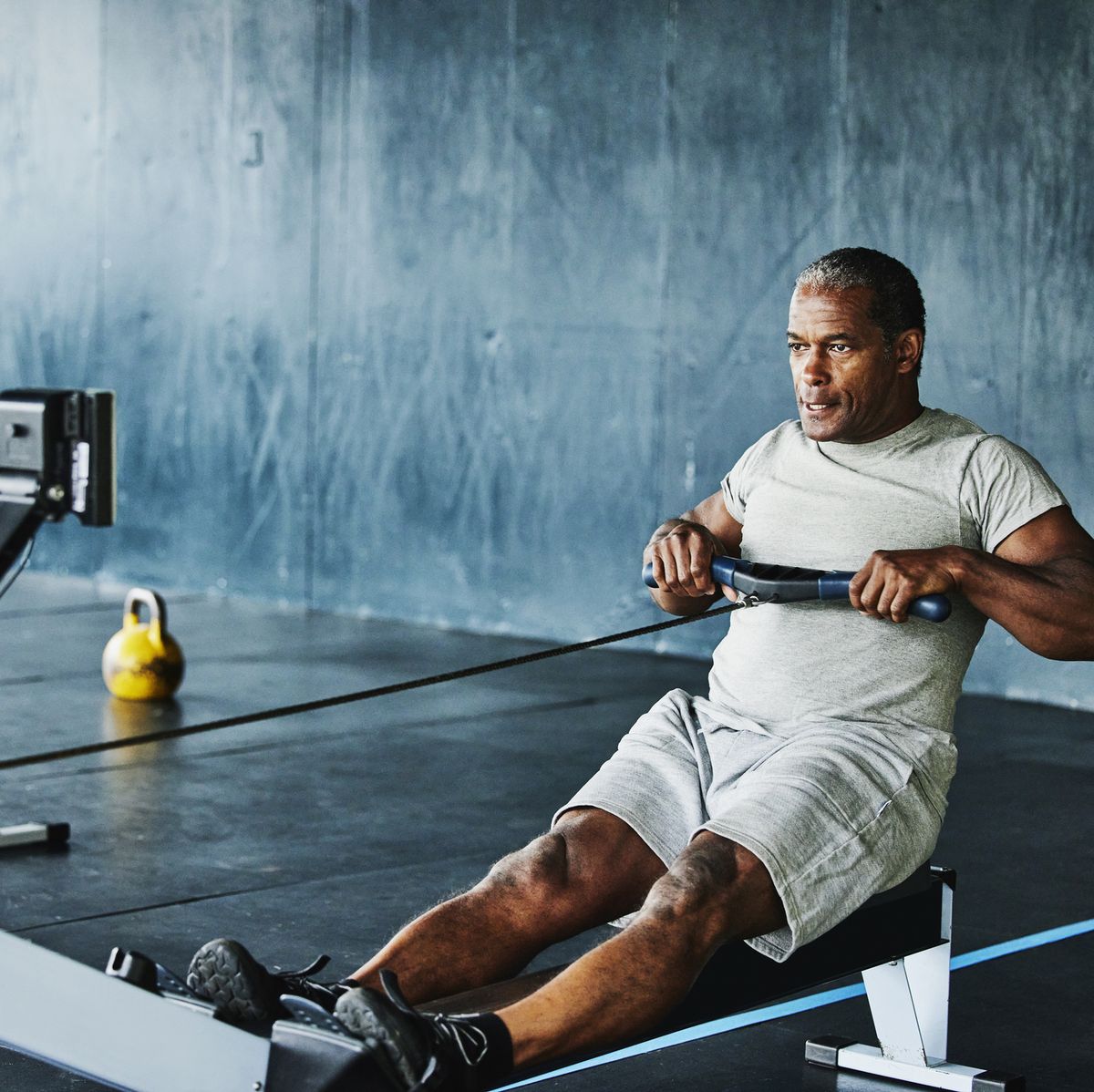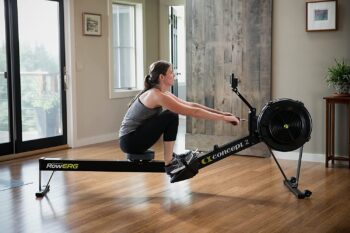Consider any joint issues or injuries you may have. Rowing machines provide a low-impact workout, while treadmills can put more stress on the joints, particularly the knees.
- Take into account your overall fitness level. Rowing machines tend to offer a more challenging workout, engaging multiple muscle groups simultaneously. Treadmills, on the other hand, allow you to control the intensity of your workout by adjusting speed and incline.
- Consider space and budget constraints. Rowing machines typically require more space compared to treadmills, which can be a crucial factor, especially for home gyms. Additionally, treadmills often come in a wider range of price options, making them more accessible for different budgets.
Ultimately, the best choice between a rowing machine and a treadmill depends on your specific fitness goals, preferences, and individual circumstances.
5. Conclusion
In the debate between rowing machines and treadmills, there is no definitive answer as to which one is better. Both machines offer unique benefits and can contribute to your overall fitness journey. The key is to understand your goals, preferences, and any limitations you may have. Consider consulting with a fitness professional or trying out both machines before making a decision.
Remember, consistency and dedication to a regular exercise routine are essential for achieving your fitness goals. Whether you choose a rowing machine or a treadmill, the most important thing is to find an exercise that you enjoy and can sustain over time.
6. FAQs
Q1: Can rowing machines help with weight loss? A1: Yes, rowing machines can contribute to weight loss as they provide a cardiovascular workout that burns calories and engages multiple muscle groups.
Q2: Are treadmills suitable for beginners? A2: Yes, treadmills are suitable for beginners as they allow you to control the speed and intensity of your workout. Start at a comfortable pace and gradually increase as your fitness level improves.
Q3: Can rowing machines cause back pain? A3: When used with proper form, rowing machines should not cause back pain. It’s essential to maintain a straight posture and engage your core muscles while rowing.
Q4: Do treadmills offer incline options? A4: Yes, most treadmills come with incline settings that allow you to simulate uphill running or walking, providing an additional challenge to your workout.
Q5: Can I use both a rowing machine and a treadmill in my fitness routine? A5: Absolutely! Incorporating both machines into your routine can provide a well-rounded workout, targeting different muscle groups and adding variety to your exercise regimen.
Remember to consult with a healthcare professional or fitness expert before starting any new exercise program to ensure it aligns with your individual needs and capabilities.
Now that you have a better understanding of the benefits and considerations of rowing machines and treadmills, you can make an informed decision that aligns with your fitness goals and preferences. Happy exercising!
7. The Importance of Proper Form and Safety
Regardless of whether you choose a rowing machine or a treadmill, it’s crucial to prioritize safety and maintain proper form during your workouts. Here are some essential tips to keep in mind:
- Rowing Machine: Ensure that you have a solid and stable position on the rowing machine. Sit with a straight posture, engage your core muscles, and maintain a relaxed grip on the handle. Focus on using your legs, followed by your back and arms, in a fluid motion. Avoid hunching over or straining your back during the rowing movement.
- Treadmill: Start with a warm-up to prepare your muscles and joints for the workout. Maintain an upright posture, relax your shoulders, and engage your core. Take care to land softly on the treadmill to minimize impact on your joints. Gradually increase your speed and incline, but avoid overexerting yourself, especially if you’re a beginner.
Always listen to your body and stop exercising if you experience any pain, dizziness, or discomfort. Stay hydrated throughout your workout and incorporate appropriate rest periods.
8. Tracking Progress and Setting Goals
To make the most of your fitness journey, consider tracking your progress and setting realistic goals. Here are some ways you can do this:
- Utilize technology: Many rowing machines and treadmills come with built-in tracking features, such as distance, time, and calories burned. Take advantage of these metrics to monitor your progress over time.
- Keep a workout log: Maintain a record of your workouts, including the duration, intensity, and any notable achievements or challenges. This can help you identify patterns, track improvements, and stay motivated.
- Set SMART goals: Establish Specific, Measurable, Achievable, Relevant, and Time-bound (SMART) goals that align with your fitness aspirations. For example, you might aim to row a certain distance within a specific timeframe or increase your treadmill running speed by a certain amount.
By tracking your progress and setting goals, you can stay motivated, celebrate milestones, and make adjustments to your workouts as needed.
9. Final Thoughts
When it comes to choosing between a rowing machine and a treadmill, there is no one-size-fits-all answer. Both machines offer unique advantages and can contribute to your fitness goals. Consider your personal preferences, fitness level, space availability, and any specific health considerations to make an informed decision.
Remember, consistency and enjoyment are key to sticking with any exercise routine. Find an activity that you genuinely enjoy and can commit to over the long term. Whether it’s rowing or running, the most important thing is to engage in regular physical activity that supports your overall health and well-being.
Now, get ready to embark on your fitness journey and make a choice that suits you best. Happy exercising!
10. FAQs
Q1: Can rowing machines help with weight loss? A1: Yes, rowing machines can contribute to weight loss as they provide a cardiovascular workout that burns calories and engages multiple muscle groups.
Q2: Are treadmills suitable for beginners? A2: Yes, treadmills are suitable for beginners as they allow you to control the speed and intensity of your workout. Start at a comfortable pace and gradually increase as your fitness level improves.
Q3: Can rowing machines cause back pain? A3: When used with proper form, rowing machines should not cause back pain. It’s essential to maintain a straight posture and engage your core muscles while rowing.
Q4: Do treadmills offer incline options? A4: Yes, most treadmills come with incline settings that allow you
A4: Yes, most treadmills come with incline settings that allow you to simulate uphill running or walking, providing an additional challenge to your workout.
Q5: Can I use both a rowing machine and a treadmill in my fitness routine? A5: Absolutely! Incorporating both machines into your routine can provide a well-rounded workout, targeting different muscle groups and adding variety to your exercise regimen.
Q6: How often should I use a rowing machine or a treadmill? A6: The frequency of your workouts depends on your fitness goals and overall schedule. For general health and fitness, aim for at least 150 minutes of moderate-intensity aerobic exercise, such as rowing or treadmill workouts, spread throughout the week. You can divide this time into multiple sessions based on your availability and preferences.
Q7: Can rowing machines or treadmills help with stress reduction? A7: Yes, both rowing machines and treadmills can be effective tools for stress reduction. Regular exercise releases endorphins, which are known as “feel-good” hormones, promoting a positive mood and reducing stress levels. Find a routine that you enjoy and use it as a time to unwind and focus on yourself.
Q8: Can rowing machines or treadmills be used for rehabilitation purposes? A8: Yes, under proper guidance, rowing machines and treadmills can be used as part of rehabilitation programs. However, it’s important to consult with a healthcare professional or physical therapist to determine the suitability of these machines for your specific condition and to receive appropriate guidance on usage and intensity.
Remember, safety should always be a priority when using any exercise equipment. If you have any concerns or pre-existing health conditions, it’s best to consult with a healthcare professional before starting a new exercise regimen.
By considering your fitness goals, preferences, and individual circumstances, you can choose the exercise equipment that aligns best with your needs. Both rowing machines and treadmills offer unique benefits, so select the one that will motivate you to stay consistent and enjoy your fitness journey.
Now that you have a better understanding of these two popular exercise machines, it’s time to take the next step and incorporate them into your fitness routine. Whether you choose to row or run, make the most out of your workouts and strive towards achieving your fitness goals. Happy exercising!





